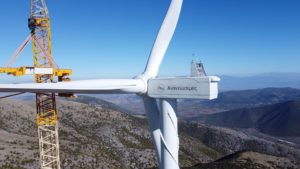EPG: Romania’s Energy and Climate Plan lacks holistic perspective, transparency

A study by Energy Policy Group assesses the most recent draft version of the National Energy and Climate Plan (NECP) by addressing three key questions: 1) How adequate are the proposed measures to achieve the emission reduction targets? 2) How robust is the evidence base for the proposed measures? 3) To what extent have stakeholders been involved in the development of the plan.
The assessment is based on four groups of key performance indicators (KPIs): data, modelling and science; stakeholder engagement; the five dimensions of the NECP; and equitable transition and socio-economic impact.
Following the assessment, EPG concluded that the draft version is limited by a lack of holistic perspective, transparency and references to scientific literature. It does not incorporate enhanced climate objectives under the Effort Sharing Regulation (ESR) and the Land Use, Land Use Change and Forestry Regulation (LULUCF).
The differentiation of emissions under the Emissions Trading Scheme (ETS) and ESR is missing, as well as detailed implementation plans. Sector specific measures, the use of renewable energy in industry and buildings and decarbonisation measures for the transport sector are also not sufficiently detailed. The draft does not fully comply with the requirements of the revised Energy Efficiency Directive (EED) or specify the Renewable Energy Directive (RED III) target on renewable fuels. It shows a lack of ambition in terms of long-term renovation strategies and overall emission reductions, with no explicit plans to reduce gas consumption or improve energy storage. In addition, the document does not contain concrete measures to support research and innovation in renewable energy technology and adaptation to climate change. There is no mention of addressing impacts on social groups, health, education or regional development.
To increase the effectiveness and impact of the NECP, the following recommendations should be considered:
(1) Increase the level of ambition of key targets such as solar and wind capacity development, grid-scale storage solutions, smart grid and CCS technologies;
(2) Mandate the use of heat pumps in renovated buildings and extend renovation rates by 2% annually; (3) Upgrade airport infrastructure, create green shipping corridors, implement low[1] emission zones, align industrial strategy with climate targets;
(4) Creating the incentive framework for afforestation and reforestation, sustainable aviation fuels, allocating funds for research and development, promoting public-private partnership and developing a medium term investment strategy;
(5) Clarifying institutional responsibilities and ensuring effective and transparent governance, involving stakeholders and empowering consumers;
(6) Analyse the socio-economic impacts and extend just transition measures to all affected sectors by creating green jobs programs, supporting affected workers and addressing energy poverty;
(7) Conduct a climate vulnerability analysis with performance indicators to monitor implementation progress.
Romania’s climate policy is strongly influenced by the European Union’s objectives to reduce emissions and achieve climate neutrality. By adopting the National Long-Term Strategy (LTS), Romania has committed to achieve a net emission reduction of 99% in 2050 compared to 1990 levels.














